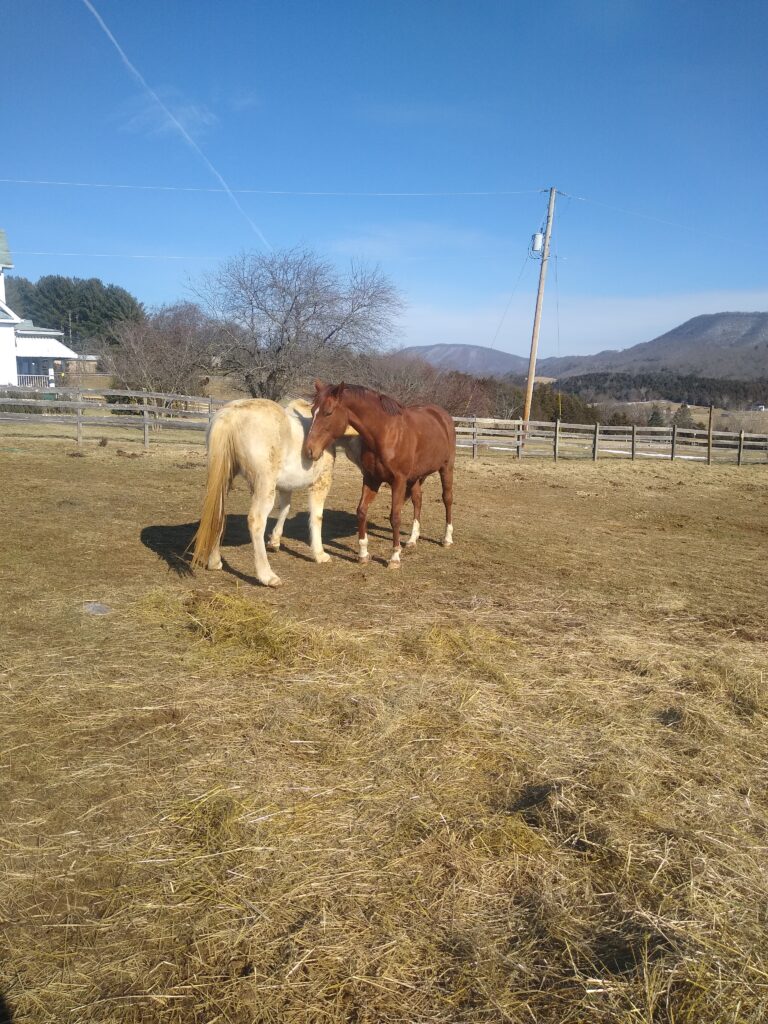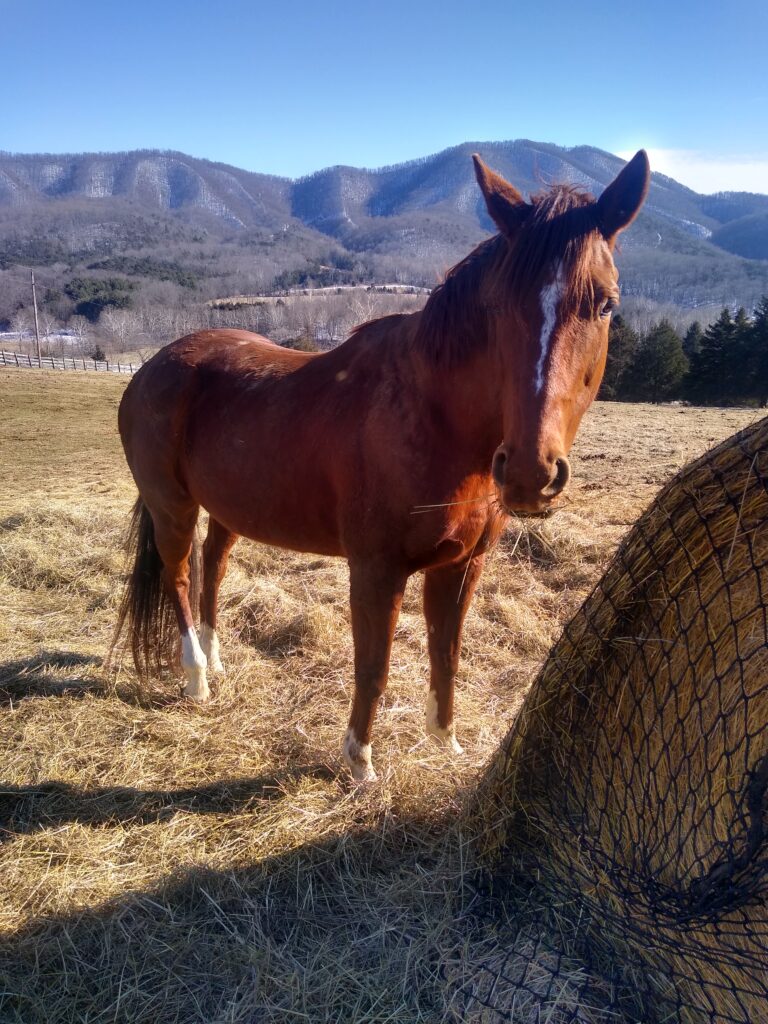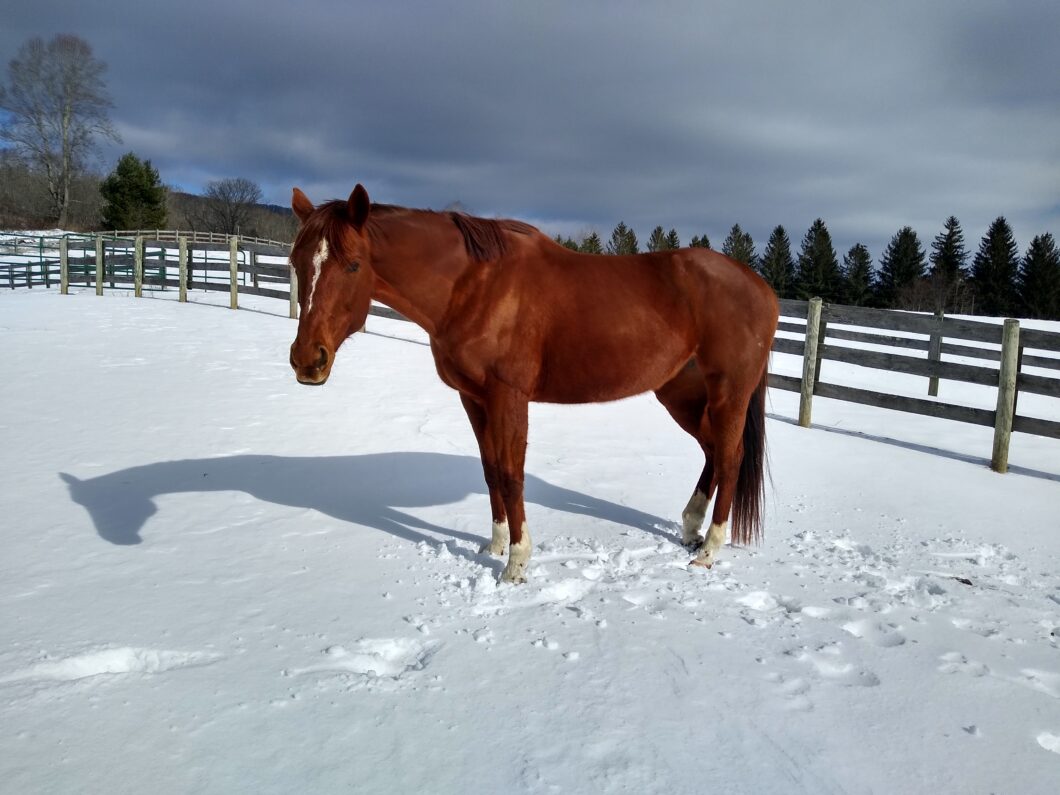Over the weekend, I moved my mare to a new farm. She has been at this farm once before for a week of training over a year ago, so it wasn’t completely unfamiliar to her, but was still going to be a transition nonetheless.
Having been at a handful of farms since I purchased her, I have a good idea at this point of how she transitions. Unlike my gelding who seems completely unfazed when at a new farm, Annie is much more sensitive. In the past, she has taken 1-2 weeks to “settle in.” By settling in I mean when she finds her place in the herd, moves freely throughout her field, and eats her full concentrate meals.
The last two times she moved, she did not eat her concentrate for several days. This is typical for Annie. She is not a super food motivated horse. It is not uncommon for her not to eat if she is not feeling well or stressed. Know what is normal for your horse! If Annie doesn’t eat or is finicky, it’s a pretty good indicator that something is wrong. For example, there has been more than one time that Annie didn’t seem interested in a meal, and then once I investigate further I realize she is also lame or has a wound, etc. Conversely, Indigo is very food motivated and if he ever didn’t eat, I would be extremely concerned. In 14 years under my care, he has never protested a meal.
Knowing that Annie is sensitive and that she has been treated for ulcers in the past, I do use omeprazole whenever I trailer her, whether that is to move her or go foxhunting. I gave her a dose of Ulcergard the day before she moved, and the day of the move. I had planned to give her more doses after the move, depending on her apparent stress level. I chose not to this time because of how well she settled in, which I will explain later in the post. If you have questions about using omeprazole, ask your vet!
To transition her feed, I brought half a bag of the feed she is used to. She will be transitioned onto the barn supplied feed, which is a similar feed but a different brand. It is also okay to transition to the new feed before you move the horse. Introduce new feed at a rate of one pound or less per day.
It is also ideal to transition hay. I use the word ideal because what we *should* do is not always what we *can* do. If your horse is on stall board or turned out individually, by all means, bring a few bales of the hay your horse is used to to make a slow transition. This is the best practice, however it is not practical for all situations. Sometimes we have to make do with what we have. In my case, at Annie’s old farm and new farm she is outside 24/7 with free choice access to a round bale. It is not feasible for me to transition her with a round bale. For one, I can’t transport a round bale. Now, I could peel off layers, but since she is turned out with other horses at all times, there is no way for me to mix her hay without having to mix it for all of the horses.
Instead, I am putting probiotics in her feed for several days in the hope this will aid her body in adjusting to new forage. What helps is that while the hay is from two different suppliers, it is the same type of hay and both are first cutting. This doesn’t necessarily mean the hay has the same nutrient content, but one could expect a transition between two bales of the same type to be less stressful than a transition between hay that is not the same variety. If this was the case, I would certainly take more precautions. Similarly, if Annie had any history of colic, I would also be more cautious.
There were many wonderful comments on non-nutrition topics like trailering and introducing horses to each other. Yes, absolutely don’t wait until the day you have to move to teach your horse to trailer. Annie is a bit of a work in progress with trailering. I did choose to use ace. Without getting into too much detail, for my safety and Annie’s safety this was the best decision for my situation. Just like with omeprazole, have that conversation with your vet about what is best for you and your horse.
Quarantining is another topic that in my experience falls into the category of “ideal, but not necessarily practical.” Not every facility will have the space for this. You also have to do a cost/benefit analysis on how this might stress your horse, and what impact that would be compared to the risk of not quarantining. Introducing horses over the fence is similar. Not every facility will have a setup for this.
In my case, Annie was being turned out with just Indigo, my gelding. While they have been separated for a few months, they were previously turned out together for several years. So, I already knew they got along, and they are also both low drama horses. Their reunion was quite boring. They sniffed each other, Annie explored a bit, and then they both went to the round bale.
Annie also ate all of her breakfast the next morning and seems quite content. Compared to some of her other moves which were stressful for both of us, this is a huge relief!
Feel free to share stories of moving your horses or ask questions in the comments.





